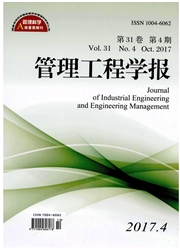

 中文摘要:
中文摘要:
突发事件演变规律复杂,在分析突发事件链式效应时存在数据信息类型多样,参考信息不确定的问题。针对这一问题,提出了一种基于信度规则库的推理方法。该方法首先从知识管理的视角出发,结合模型的共性知识构造信度规则库,然后将多种不确定性数据类型转换成统一的信度结构,最后通过证据推理方法融合信度规则对突发事件链式演变进行推理,为应急决策提供支持。文末,通过地震耦合暴雨引发泥石流和滑坡的示例验证了该方法的实用性和有效性。
 英文摘要:
英文摘要:
The discipline of emergency evolution is complicated. There are problems such as data diversity and reference uncertainty when the chain effect of emergency is analyzed. Aiming at this issue, a reasoning technique, which is based on the relief rule base, has been proposed. First, a relief rule base is constructed by combining with structural common knowledge from a knowledge management perspective. Then, various uncertain data structures are converted into a unified relief structure. At last, reasoning method will be utilized to predict emergency chain evolution. It is supportive for emergency decision making. At the end of the text, the usefulness and effectiveness are verified through the demonstration of mud-rock flow and landslide caused by seismic coupling heavy rains. In the first part, this paper analyzed the evolutionary characteristics of emergency resulting from natural disasters. Based on these characteristics, rule-based reasoning is considered to be the main method to construct the chain of emergencies. This study also summarized the limitations of the existing research by pointing out the main work and innovation of the paper. In the second part, this paper described the underlying demand information has two significant features in the process of the emergency chain of reasoning including diverse data and uncertain reference information. The belief structure under the theoretical framework of evidence can effectively deal with the issue. Afterwards, the underlying assumptions of the evolution of the emergencies chain of reasoning model is presented. In the third part, this paper puts forward a reasoning method on the ground of belief rule base. According to this reasoning method, the constructing process involves five steps, including formal representation of event-related knowledge units, the construction of belief rule base, the conversion of data input, the input of the calculating formula regarding how well the rules match, and the rules of reasoning-based evidence. The effectiveness of the p
 同期刊论文项目
同期刊论文项目
 同项目期刊论文
同项目期刊论文
 期刊信息
期刊信息
